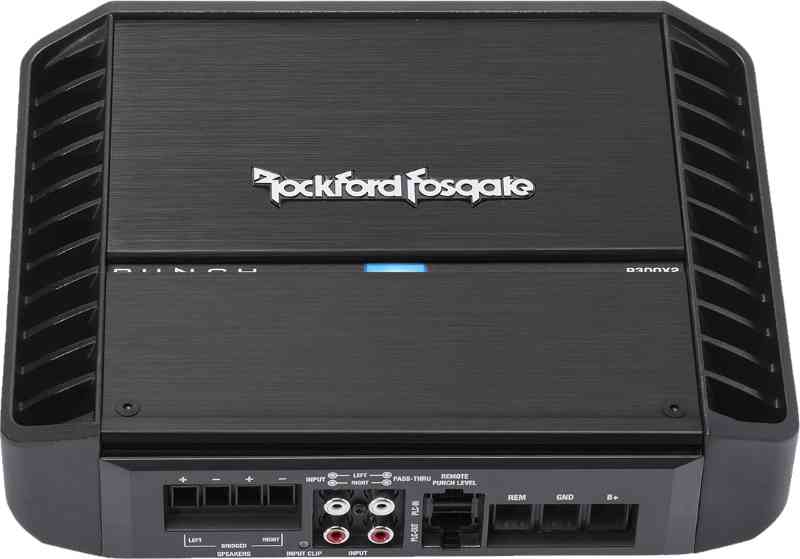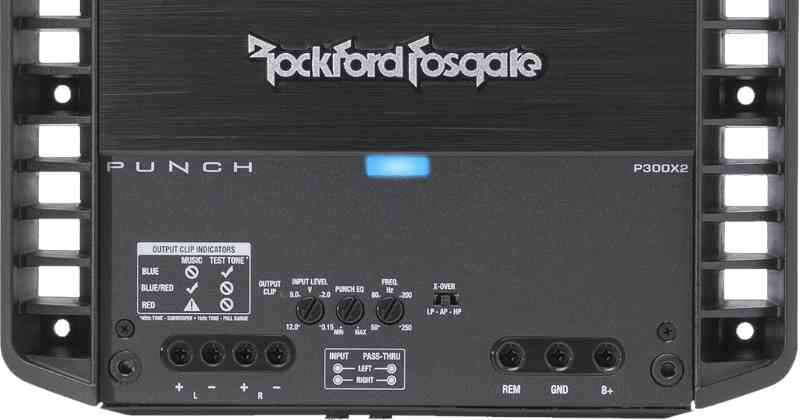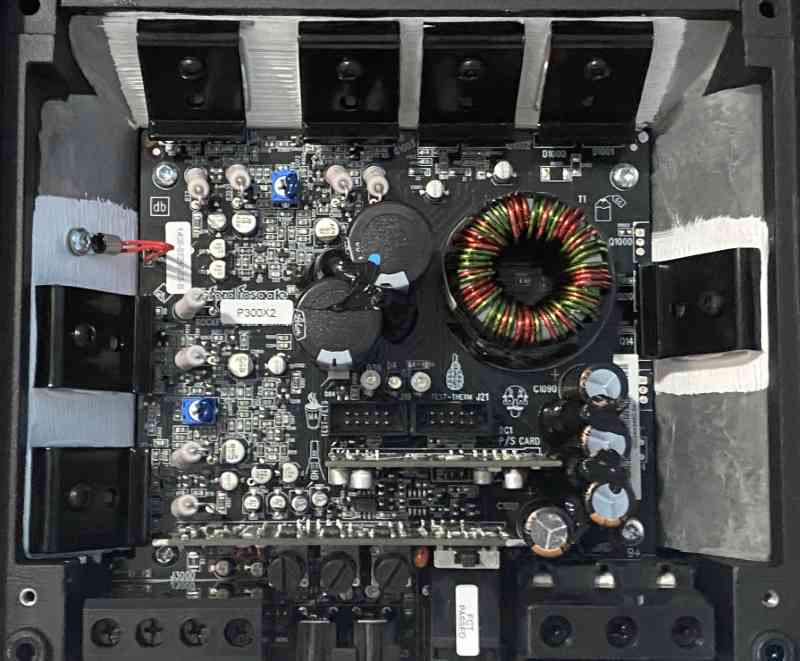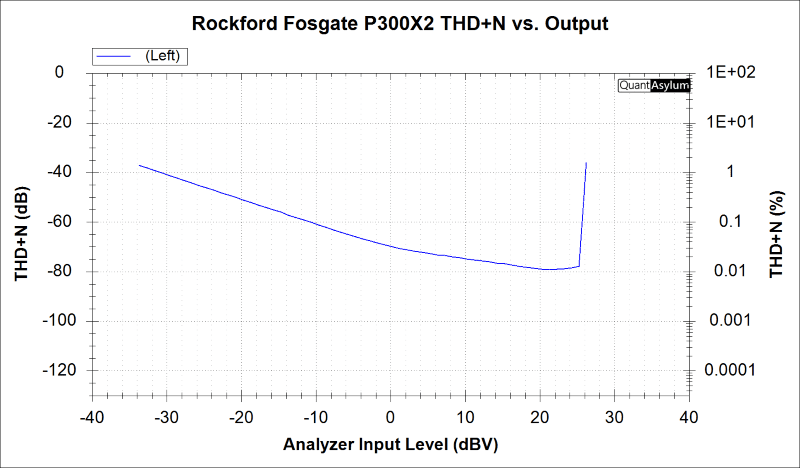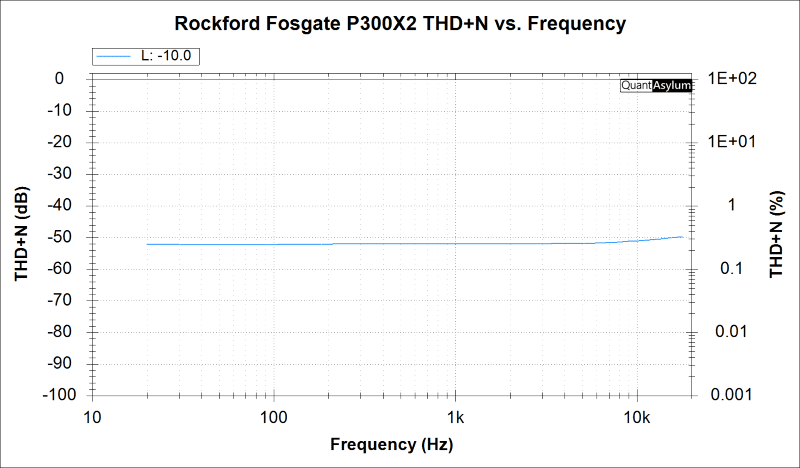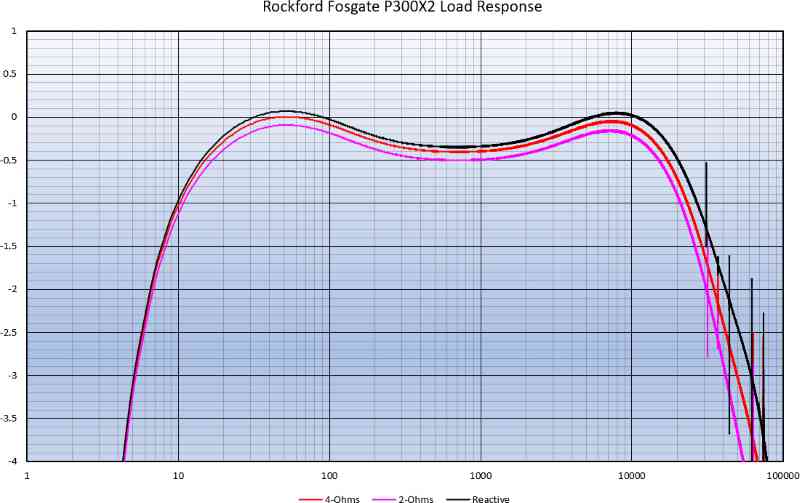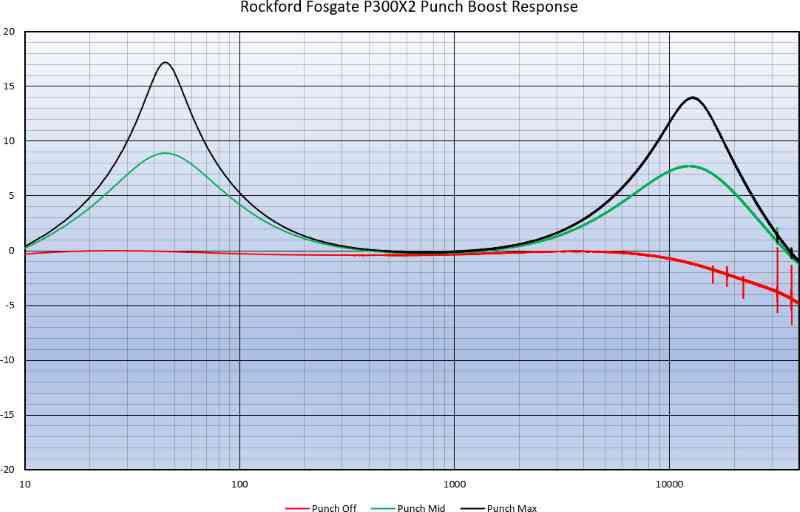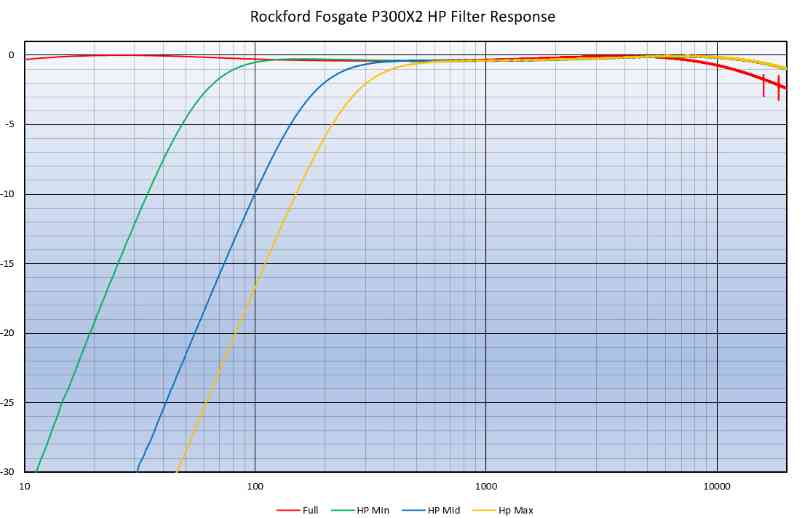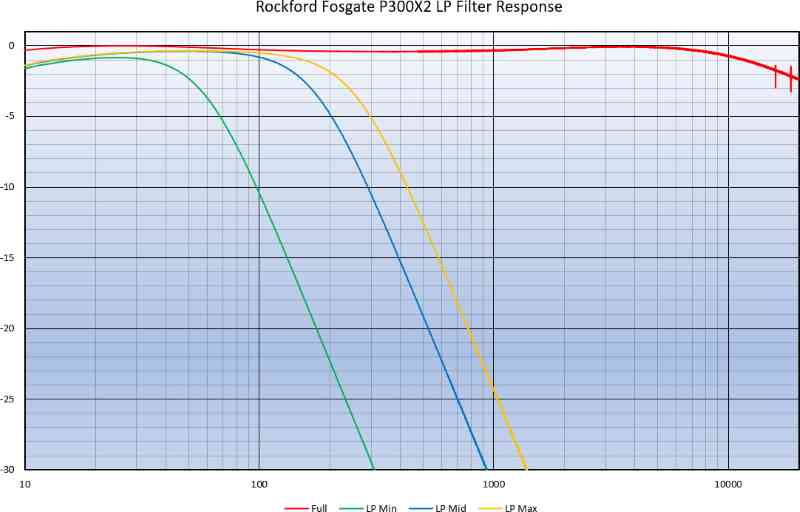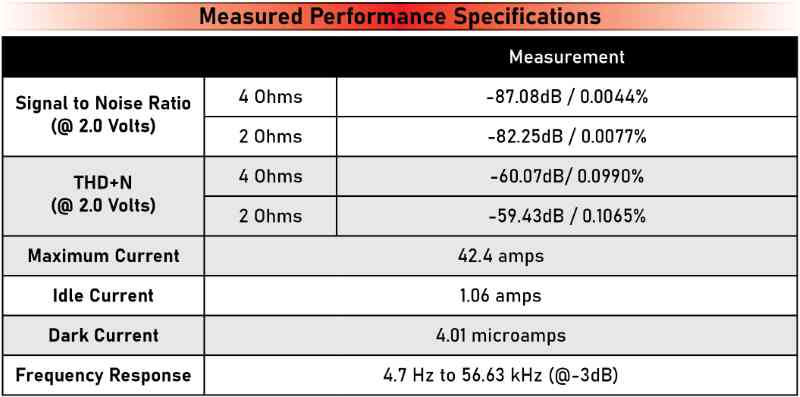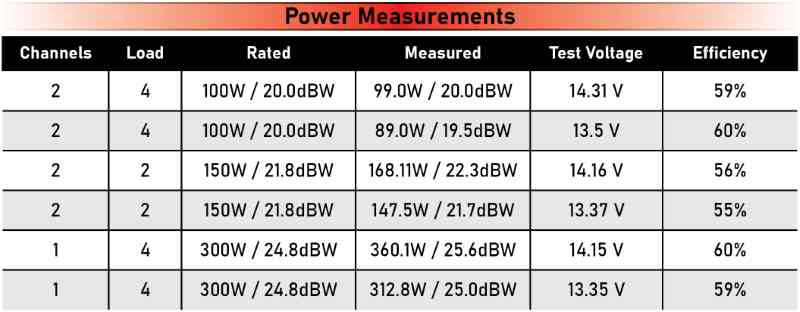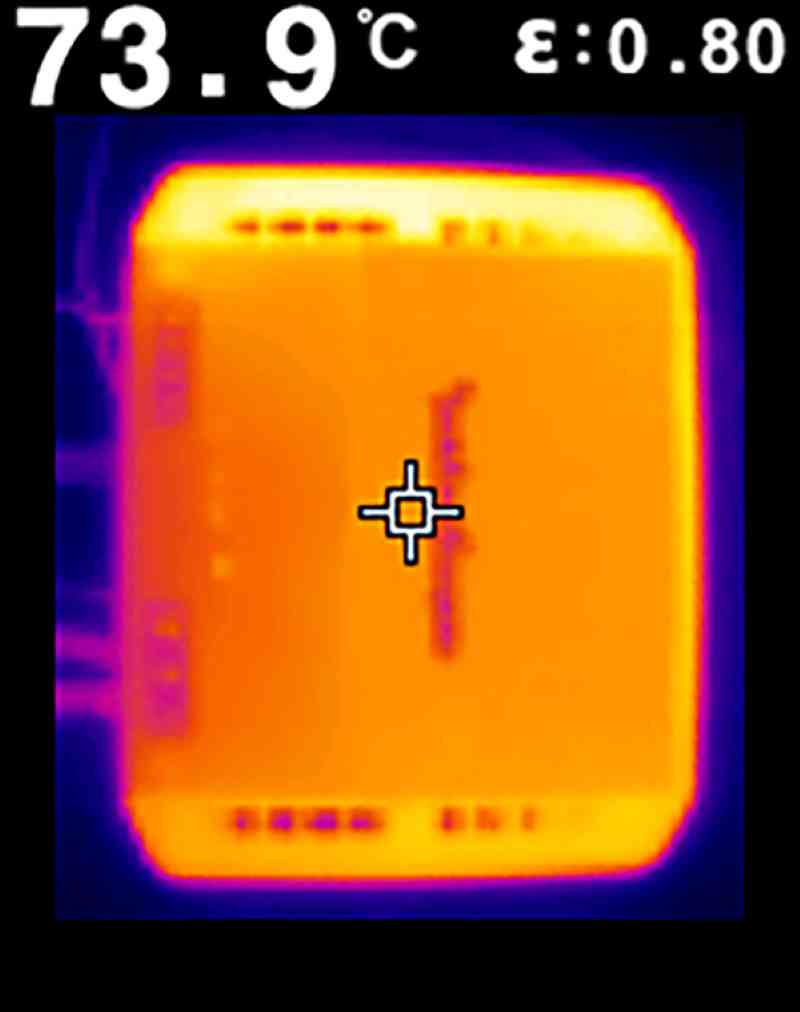If you’ve been around the car audio industry for as long as I have, you know Rockford Fosgate started in 1973 with the introduction of its first car audio amplifier. Through the ’80s and ’90s, the brand grew at an exponential rate, adding subwoofers, speakers and more amplifiers that deliver fantastic performance to car audio fanatics who want their music clear and loud. The Punch name has become synonymous with the brand and currently represents their mid-tier line of solutions. For this Test Drive Review, I have one of the Punch P300X2 two-channel, 300-watt amplifiers in the lab to check out.
Rockford Fosgate P300X2 Features and Specifications
The P300X2 is a stereo car audio amplifier rated to produce 100 watts per channel when connected to a pair of 4-ohm speakers, 150 watts per channel when driving 2-ohm speakers and can be bridged to deliver 300 watts into a single 4-ohm load. The amplifier can handle as much as 12 volts RMS of signal on the RCA connections. The onboard crossover can be bypassed or set to low- or high-pass modes and adjusted from 50 to 250 Hz. The filter slope is specified as being -12 dB per octave.
Of course, a Punch Series amplifier needs to include the Punch EQ circuit. Punch EQ allows your installer to dial in as much as 14 dB of signal boost at 12.5 kHz and a simultaneous 18 dB of boost at 45 Hz to add some serious kick to your music. The amp is upgradable with the optional PLC2 remote level control. This “bass knob” includes an LED clip indicator, so you’ll know when you’ve maxed out the amplifier’s power delivery capabilities. Given that not everyone knows when to stop cranking the volume, this is a worthwhile upgrade, even if you won’t change the subwoofer level too often.
The P300X2 is equipped with the C.L.E.A.N. Set-Up feature that helps your installer optimize the amp’s input signal and output capabilities. A small LED beside the sensitivity control illuminates blue when the amp starts to distort.
The P300X2 is based on a surprisingly heavy cast aluminum heat sink that includes open fins on the left and right ends. The amp weighs 9.5 pounds. This weight is a significant factor as the mass of the heatsink is fundamental to keeping the amp cool so that it will continue to play when pushed hard. The heatsink has been powder coated black, and the two-piece aluminum top panels have a brushed hairline finish. All the controls are accessible by removing the top panel closest to the connection panel using the provided hex-head wrench. By the way, the back of this removable panel has a large piece of foam attached to it to ensure that it doesn’t rattle as you drive or enjoy your music.
Electrical and signal connections are made along the front edge of the amp. Four speaker terminals on the left will easily accept up to eight-AWG wires. Another terminal block for remote, power and ground connections is on the right. The power and ground blocks will easily accept four-AWG cables. All the terminals use #2 Phillips screws to secure the wires. The set screws are accessible from the top of the amp and are concealed once the installation is complete.
The amp has two sets of RCA input terminals: one for signal input to the amp and a second set that serves as a pass-through to let you connect another amplifier without the need for Y-cables. Last but certainly not least, the PLC2 connections are handled by RJ45 jacks. There’s an input jack for the optional PLC2 and a second jack labeled PCL-OUT that allows your installer to daisy-chain the signal to another PLC2-ready Rockford Fosgate amp.
Aside from the testing and listening, one of my favorite parts of reviewing amplifiers, radios and processors is taking them apart. I can learn a lot about the product’s design during this process. Disassembling the P300X2 was an excellent example of why I enjoy this. Every panel and component is secured tightly so nothing will rattle. As I mentioned previously, the amp is mostly heatsink, but that fact is highlighted when the top cover is removed. Additional cooling fins are revealed along the back edge of the amp that help keep things cool. I could (and will) write an article about different amplifier cooling designs soon! When it comes to a chassis that doesn’t use a fan, this P300X2 is a benchmark in high-mass convection cooling implementations. I like it!
Looking at the main circuit board reveals a plethora of surface mount components. While this might not seem significant, it shows that the amp is a modern design that is optimized to use the latest, most efficient and most reliable production methods. Geeks like me ought to be impressed. There are four 330 uF, 63-volt, 105-degree caps on the 12V input connection for filtering and a pair of large 3300 uF, 50V caps on the power supply rails for voltage regulation and energy storage. The capacitors and the transformer have black silicone on them to help prevent movement that could damage the connections.
The switching and output devices are clamped to the angled interior of the heatsink using heavy-gauge steel brackets that also serve to help wick heat away from the device. Finally, two daughterboards are mounted vertically to the mainboard. One board contains the potentiometers and switches for signal processing. The second board is labeled “P/S card” and assumedly contains the driver and control circuitry for the switching power supply. If you’re familiar with Rockford Fosgate electronics, you’ll recognize the avatars on the circuit board from the members who developed the product. Overall, I’d give every aspect of the amp design an A+ for attention to detail and execution.
Listening to the Rockford Fosgate P300X2
I set the P300X2 up in my reference system, connecting it to my modified Clarion DRZ9255 source unit and a set of Polk Audio LSi9 bookshelf speakers. I’ll be running the system full-range to evaluate the amplifier’s bass performance along with the midrange and high-frequency characteristics. It’s likely that many consumers will choose this amp as a high-quality solution to power a subwoofer, so every aspect matters.
I usually listen to four or five songs I know well to evaluate the performance of an amplifier. However, with the P300X2, I ended up listening to several CDs in their entirety.
I started with “Bubbles” by Yosi Horikawa from the album Wandering. My friend Fred suggested this track as a good challenge for anyone who wants to experience sounds extending laterally beyond the speakers. The track starts with what sounds like ping-pong balls and other similar plastic items being dropped and bouncing off of a hard surface five or six times. The second and third items had a massive presence that indeed sounded larger than the bounds of the soundstage set by the speaker position. This is a complex song made up of different percussive elements. It’s not really useful for attempting to discern tonality, but it’s pretty cool for imaging. If you recall the alarm clocks at the beginning of Pink Floyd’s “Time,” this is like that.
Next was “Radio Ga Ga” by Queen from The Works. There’s nothing particularly fancy about the production of this track, but it’s complex and has some impressive bass just after the four-minute mark. Freddy’s voice stayed well-focused in the center of the soundstage as the backing vocals and instruments blended around him. When the deep 41 Hz bass note rolled in around 4:12, the P300X2 had no problem keeping everything tight and controlled with the speakers shaking the couch, shelves and ceiling tiles.
Up next was Billie Eilish with “you should see me in a crown” from When We All Fall Asleep, Where Do We Go? This track has a techno feel to it and, once again, has an impressive bassline. Billie’s voice was crystal clear and stable no matter what was happening. This is another great song to enjoy at high volume levels with the P300X2.
To mix things up, I cued up “Spirit of Radio” by Rush from Permanent Waves. You can really hear the difference in how music recorded more than 40 years ago sounds from modern offerings. Nevertheless, my fellow Canadians in Rush deliver an excellent performance. The left-to-right panning on the drums, Geddy’s voice and the guitar are focused, clear and detailed through the P300X2.
I decided to finish the formal listening with something extremely challenging. I chose Norah Jones and her “Come Away with Me” performance from her self-titled debut album. This track is very clean and has been used by many audio enthusiasts looking for cues about the performance of a specific component or sound system. What really stood out for me was the clarity of the cymbals. They rang beautifully, and when played with a brush, you could hear the detail in each bristle. They sound real, not muddied or smeared. Very few amplifiers can get this right. Norah’s voice was silky smooth with absolutely no unwanted emphasis anywhere. The same goes for the piano – it sounds like a piano should. Very impressive! If you ever wonder what the difference between a high-quality Class A/B amp (like this one) and a Class D amp is, listen to this track while comparing them in the same system at the same volume level.
Bench Testing the Rockford Fosgate P300X2
With the listening done, it’s time to take the amp over to the test bench and put it through its paces. I typically start with low-voltage measurements for noise, distortion and frequency response, then check idle current and so forth.
The THD+N vs output graph shows very typical (and good) performance from a Class A/B amplifier. At very low levels, the distortion is dominated by crossover distortion as the signal passes from the positive to negative output devices. It reaches a minimum of around -79 dB or 0.011% at 20 dBV.
The THD+N versus frequency graph was measured at an output level of 2.0 volts. This level is equivalent to 1 watt into a 4-ohm load. This is a much more challenging level to measure distortion as the switching noise I just mentioned becomes a more significant part of the information. Again, the P300X2 performed quite well with smooth response across the audible range.
In terms of current measurements, the amp drew only 1.06 amps when idling, and the dark current measurement (current draw when the amp is off) was 4.01 microamps. Maximum current with the amp making full power bridged to a single 4-ohm load at 1% THD+N was 42.2 amps.
The measured frequency response with -3 dB is 5.1 Hz on the bottom and 49.47 kHz on the top, referenced to the top of the bump at 50 Hz into the 4-ohm load. This response is good and wide and will stay out of the way of any music you want to play. Regarding the overall frequency response, the perception of clarity that I heard during the listening may have come from the slight boost of 0.35 dB at 7.5 kHz on the top. The overall frequency response didn’t change much when driving 4- or 2-ohm resistive loads or my reactive simulated load. Once again, Class D amplifiers never perform well in this test.
If used enthusiastically, the famous Punch EQ circuit can undoubtedly add some kick to your music. I measured the response with the setting in the middle and when maxed out. The graph above shows the peaks at 45 hertz in the bass range and around 12.5 kHz on the top end. Unlike typical bass and treble tone controls on a radio, these frequencies are lower and higher and help extend response when smaller speakers are used. However, be careful: With more than 17 dB of boost available on the bottom end, you can quickly push the amplifier to the point that it will distort. I always recommend using more subwoofers or switching to a bass reflex enclosure design if you want more bass.
The last of the small-signal testing was to evaluate the function of the crossovers. Not surprisingly, the -3 dB frequencies of the low- and high-pass settings overlap perfectly. The roll-off measured right at -12 dB per octave.
Next up were the power measurements. Rockford Fosgate product specifications are always in tight compliance with the ANSI/CTA-2006-C standards. I saw 99 watts of 4-ohm power, which is indiscernible from the rated 100-watt spec. It’s worth noting that the amp was supplied with 14.3 volts. An extra tenth of a volt on the supply side would yield the rated 100 watts. With both channels loaded to 2 ohms, the amp produced 168 watts into each load bank, beating its specification by 18 watts. Finally, with the amp bridged into a single 4-ohm load, it made 360.1 watts, besting the 300-watt spec by 60 watts with only 14.15 volts from the supply. Rockford Fosgate’s reputation of underrating the power production capabilities of their products continues. With so many companies rating their amplifiers at 10% distortion levels, numbers like this make me smile.
On the efficiency front, that amp wasn’t amazing, but we’re accustomed to seeing Class D numbers. These are fine for an A/B amp. It’s also important to know that the heat sink had no problem keeping temperatures under control for the entirety of the testing process. I’ll do thermal management testing at the end of the bench evaluation to see how things fare.
Next, I looked at the accuracy of the C.L.E.A.N. Set-Up function, comparing it to the distortion measurements of my QuantAsylum QA402 audio analyzer. The blue LED came on at 1.22%, it turned violet at 11.66% and finally red at 26%. I usually buy more amplifier power than I need, so I’d set things to max out with the LED turning blue. You might want a hair more to push this to its limit. Of course, if you’re using the amp with a high-pass filter, level-setting is an entirely different process.
The last test I performed was to evaluate the efficacy of the cast aluminum heat sink. I’ve tested many compact amplifiers, and some overheat and shut down in less than two minutes while playing at full power. I’m happy to report that the MEHSA3 output device and DTM heatsink features work fantastically. I played the amp at its full 1% THD+N measured power level of 360 watts for 28.5 minutes before the amp shut down from overheating. That’s amazing! Keep in mind, this is a steady-state tone, not music, so you are unlikely to overheat this amp in your car or truck.
The amp didn’t make any noises through the speakers when powering up or down, and there was only the most minute amount of transformer squeal at full power. Overall, it behaved very well on the bench.
Conclusion
I’ve wanted to do some critical listening with a full-range Rockford Fosgate amplifier for some time. My experience with the P300X2 was every bit as good as I’d hoped. The soundstage the amp produced was nicely detailed, and tonally, the amp was fantastic. The tiny boost in the bass and upper treble weren’t significant enough to alter the balance of any instruments or voices but instead seemed to add a sense of clarity. Measurements were very good overall, showing that the Rockford Fosgate engineering team continues to develop exceptional products. The thermal performance of the heat sink will ensure that this amp can crank out the jams for hours and hours.
If you’re in the market for an amplifier to drive the speakers in your car or truck to impressive output levels, I’d have no issue recommending the Rockford Fosgate Punch P300X2. This amp would serve as a significant upgrade to most of the Class D full-range solutions on the market. Don’t believe me? Give it a try!
To learn more about this amplifier or any of the products from Rockford Fosgate, visit their website. Also, be sure to follow them on Facebook and Instagram. Finally, don’t forget to check out their YouTube channel as their marketing team releases amazing videos quite frequently.

